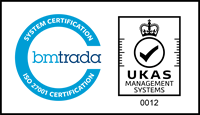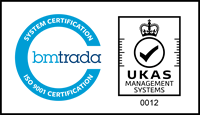Posted on: Thursday January 19, 2023

As much as we’d like to pretend otherwise, work takes up a massive chunk of our lives…
Most of us work an average of eight hours a day. Our salaries play a large part in our financial health. And our moods, of course, are shaped by the ups and downs of our worklife!
Unsurprisingly then, workplace wellbeing matters. And not just on a personal level, but on a business level, too.
In fact, FTSE 100 companies who prioritise employee engagement and wellbeing outperform the rest by up to 10% – with staff reporting higher levels of morale, productivity and loyalty.
But how do go about designing a healthy workplace – and making changes that make an actual difference?
Here are the three key pillars of work wellness.
Pillar one: Education
Are your staff aware of healthy emotional habits at work?
As an initial step, it’s important that your employees know the basics of workplace wellbeing.
Why not host some workshops to cover some simple actions they can take everyday. These include:
- Taking regular breaks: if employees are glued to their desks or workstations all day, the pressures of work can feel all-consuming. A cup of tea here, a walk there and a full lunch hour can quickly snap people out of their stresses.
- Switching off after work: when employees’ contracted work hours stop, they should stop too. This enables them to catch up on chores, see friends, exercise and regain a much-needed feeling of control over their time.
- Flagging heavy workloads: employees should speak up when things get too much. By highlighting excessive expectations, rather than accepting them, your staff’s baseline level of work stress can be massively reduced.
Pillar two: Culture
Is your company culture conducive to good mental health?
Individual staff behaviours can move the needle along somewhat. But bigger changes happen when your culture changes as a whole.
The entire workplace needs to be set up to protect and honour people’s mental health, which involves weeding out any potential stressors in your company.
Here are the main things to watch out for:
- Overly pressurised working conditions: a culture (or cult) of perfectionism can damage employees’ wellbeing, especially if they’re already experiencing things like anxiety or OCD. There needs to be a sustained acceptance of mistakes and risk-taking within your workplace.
- Unreasonable expectations: employees can often find themselves doing two or three roles at once, with their schedules crammed full of tasks. If this happens regularly, it might be time to consider extending deadlines or hiring more staff.
- Miscommunication: a lack of clarity around tasks can cause delays and conflict. Simple things like regular catch-ups, kick-off meetings and daily team update emails can clear up a lot of confusion – and clear out a lot of stress.
- An emotionally unsafe environment: employees need to come into work knowing they won’t be insulted, shamed or belittled by their colleagues. As the saying goes, "one bad apple can spoil the barrel."
Pillar three: Support
When people are unwell, are they given the help they need?
While we’ve covered a range of preventative strategies, there need to be mechanisms in place to help employees weather – and recover from – more difficult periods.
To help with this, you can:
- Train line managers in mental health support: make sure they’re able to help colleagues in a managed and effective way with training sessions, prescriptive guidelines on managing mental health and regular one-to-ones with their team members.
- Offer time off: sometimes, things can get so overwhelming that employees need to pause and step away from work for a while. To make this initiative actionable, you should make it part of your overall HR policy and strategy.
- Conduct employee surveys: find out how employees are feeling and what they feel they need in times of crisis. These should be carried out regularly, updated to reflect changing conditions like remote working, and constantly signposted to employees.
A final note: if one pillar falls, the others start to wobble
Needless to say, the everyday demands of any job mean that a healthy workplace requires constant effort, reflection and coordination.
So, to preserve your company wellbeing in a sustainable way, you should put equal effort into all three pillars mentioned above.
If your staff aren’t educated on healthy habits, that’ll impact your culture. If your culture isn’t healthy, people won’t have the breathing space to get support. And so on.
Each pillar feeds into the other. But when they’re all maintained equally, you can create a rare and powerful thing in the world of business: a workplace that values employees’ feelings more than anything else.
Want more support in building a healthy workplace? Get in touch now.
Cut costs, not culture: smarter benefits for smarter budgets
The secret to humanising the workplace and individualising reward lies in a more sophisticated approach to segmentation, and that applies as much to benefits as it does to pay.
Posted on: 25 June 2025 by Andrew Walker, New Business Development Director
Minimum Wage, Maximum Quandary
With the April wage and NI increases behind us, employers and HR teams are now reassessing reward strategies. By taking a targeted, tech-enabled approach and strengthening communication, it’s possible to maximise budgets while still supporting, motivating, and retaining talent.
Posted on: 12 June 2025
Understanding Claims Drivers and Conditions to Help Employers Plan Effectively
Employers can tailor benefits more and introduce preventative measures by simply examining claim driver trends across insurance products.
Posted on: 28 May 2025 by Lisa Hack, Head of Product






